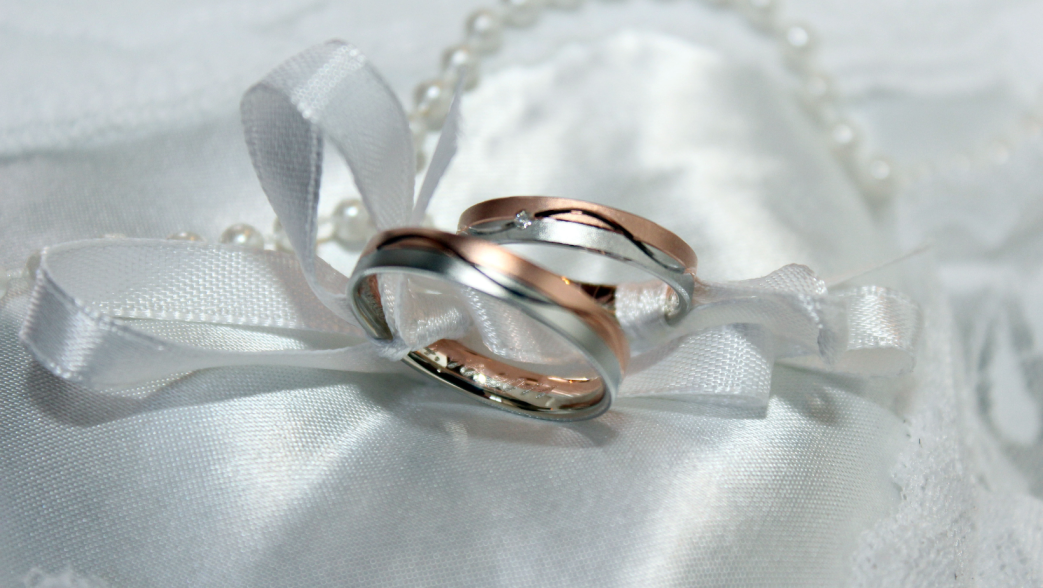The phrase, “tie the knot,” refers to the handfasting ceremony practiced back in the days of old. Handfasting is an ancient Celtic custom that dates back to medieval times. The idea behind it is that by tying a strip of cloth in a knot around the wrists of a betrothed couple, it transforms two into one, binding them in holy matrimony. Today the phrase, “tying the knot” has expanded its meaning to just another way to say that someone is getting married.
Another romantic tradition is the ring finger, a sign of love and long-standing devotion. Wearing a wedding band on the fourth finger – the ring finger – dates back to ancient Egypt. At that time, it was believed that a vein ran all the way from the fourth finger directly to the heart. In ancient Rome, this vein was referred to as vena amoris – the vein of love. Sadly, we have no vein of the sort, but the tradition lives on.
Also, the bride always stands to the left of the groom so that he can keep his right hand free to draw his sword to protect her. It’s not necessarily something we need quite as much today, but this particular ritual has also become a steadfast tradition. Speaking of sword wielding knights in shining armor, getting down on one knee to propose can be traced back to a time when knights knelt before nobility to express their undying devotion.
Plus, do you know why bridesmaids dress alike? Way back in the day, bridesmaids dressed not only like each other, but like the bride to confuse any evil spirits.

